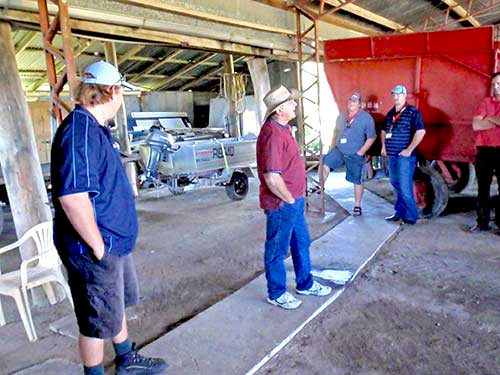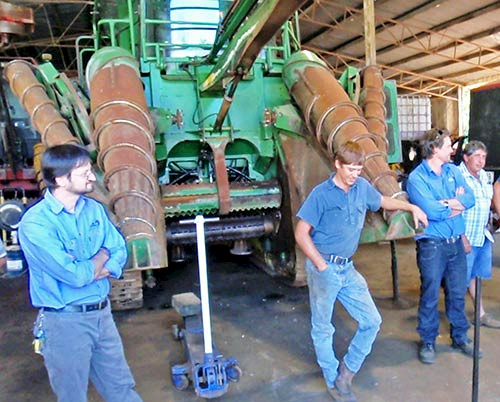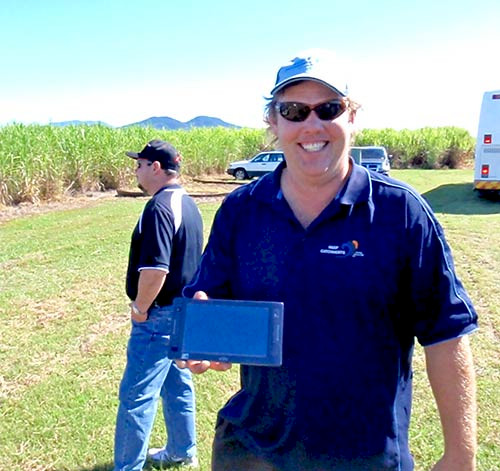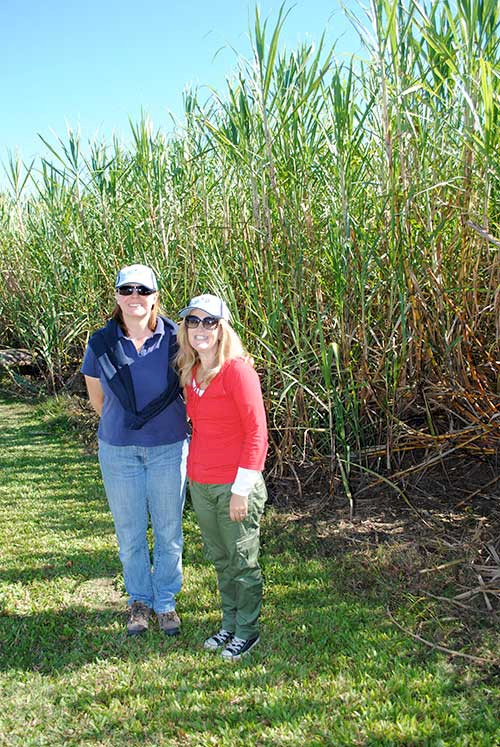Reasons to be optimistic about sugarcane impacts on the Great Barrier Reef
Bill Dennison ·There are several reasons that I have cause for optimism regarding the future of sugarcane impacts on the Great Barrier Reef: 1) the tinnies in the farm sheds, 2) the young cane growers, 3) the widespread adoption of high tech equipment for precision agriculture, 4) the innovative, can-do attitude of a group of cane growers, 5) a grower's statement that pesticides are "dirty, stinky, expensive, toxic crap", and 6) the engagement of Coca-Cola in Project Catalyst. I will explain each of these in turn.
1) The tinnies in the farm sheds. On our tour of different farms in the region to see the various mechanical, technological and science innovations, we stopped in various farm sheds. Tucked away in the corner of several sheds were small aluminum fishing boats ('tinnies'), which the cane growers would use to visit the local waterways. The presence of the tinnies and the prevalence of good fishing stories and 'big lizard' stories (there are salt water crocodiles in the region), is an indicator that the cane growers have a personal stake in the future of the waterways which all flow out into the Great Barrier Reef.

2) The young cane growers. While many of the workshop attendees were middle aged, we encountered various younger fellows when we visited various farms who indicated that they were going into the business of growing cane. The combination of parents who want to leave the land and the cane industry in good condition for their children and the younger generation who can embrace the technologies and attitudes that promote sustainable agriculture is heartening.

3) The wide-spread adoption of high tech equipment for precision agriculture. Contrary to the perception that farmers in their rural lifestyle are not sophisticated or technologically savvy, the amount of very sophisticated gear that they were facile in operating was amazing. I was asking about the digital elevation mapping that they used to help create precision agriculture rates of fertilizer use and asked if they used LIDAR, the satellite technology that we use in coastal flood risk mapping, and their response was that LIDAR was not accurate enough for the fine scale resolution (cm) that they require.

4) The innovative, can-do attitude of a group of cane growers. The growers involved in Project Catalyst were clearly early adopters and very motivated. One of the things that they immediately did when visiting each other's sheds was to look over each other's farm equipment. When they had an idea that would improve their farming practice, they either had the skills themselves or had access to the skills to make the improvement. They also had the attitude that they could experiment with different approaches and were not afraid to try out a new way of growing sugarcane.


5) A grower's statement that pesticides are "dirty, stinky, expensive, toxic crap". This statement epitomizes the attitude that using chemicals, while a necessary evil now, could be phased out in the future with more organic approaches. The development of a healthy soil with its microbes and fauna could alleviate some pests, and genetic advances are being pursued for enhancement of fungal resistance. The incentive for canegrowers to use chemicals as sparingly as possible also promotes minimal application rates, and to time the application of chemicals to maximize effectiveness and minimize runoff.
6) The engagement of Coca-Cola in Project Catalyst. Coca-Cola is a key partner in Project Catalyst and has embraced the concept of sustainability in the production of sugar. Coca-Cola is a major sugar user, and by demonstrating environmental leadership, they are sending an important message to the broader community. There are other important partners in Project Catalyst; WWF, Reef Catchments and various cane growers, but Coca-Cola provides the major funding and is one of the world's largest corporations.

Sugarcane runoff is a significant issue in the Great Barrier Reef, particularly with regard to nutrients and pesticides. Thus, it is critically important that the sugarcane industry continues to innovate ways to reduce their impact on the Great Barrier Reef. The challenge will be to maintain progress after the funding runs out and to effectively transfer best practices to the entire sugarcane industry. These will be large challenges, but for the reasons listed here, there is cause for optimism that this group of smart, committed and creative people who grow sugarcane can rise to the challenge.
About the author
Bill Dennison

Dr. Bill Dennison is a Professor of Marine Science and Vice President for Science Application at the University of Maryland Center for Environmental Science.

